This 15 January 2022 commemorates the 400th anniversary of the birth of Molière in Paris. This is an opportunity to follow in the footsteps of the great French writer in the City of Lights. It’s up to you to find them once you’re there or on Google Maps!
[lwptoc]
Who was Molière?
Jean-Baptiste Poquelin (1622-1673), known as Molière, was a French actor and playwright.

He was baptised on 15 January 1622 in Paris at the Saint-Eustache church.
In the autumn of 1645, Molière left Paris. With the Molière’s Company (Troupe de Molière and later Troupe du Roy), he spent the next thirteen years travelling through provincial France. Mainly Guyenne, Languedoc, the Rhône valley, Dauphiné and Burgundy, with regular stays in Lyon, sometimes lasting several months.
The company’s presence has been noted in Agen, Toulouse, Albi, Carcassonne, Poitiers, Grenoble, Pézenas, Montpellier, Vienne, Dijon, Bordeaux, Narbonne, Béziers and Avignon.

Molière came back to Paris in 1658 and quickly became the favourite actor and author of the young Louis XIV and his court. For them, he designed numerous shows in collaboration with the best stage architects, choreographers and musicians of the time.

He died at the age of 51 on 17 February 1673, a few hours after playing the title role in Le Malade imaginaire for the fourth time.
Molière’s work
The work of Molière includes some thirty comedies in verse or prose, with or without ballet and music. His work is one of the pillars of literary education in France. It continues to be a great success in France and throughout the world, and remains one of the references of universal literature.
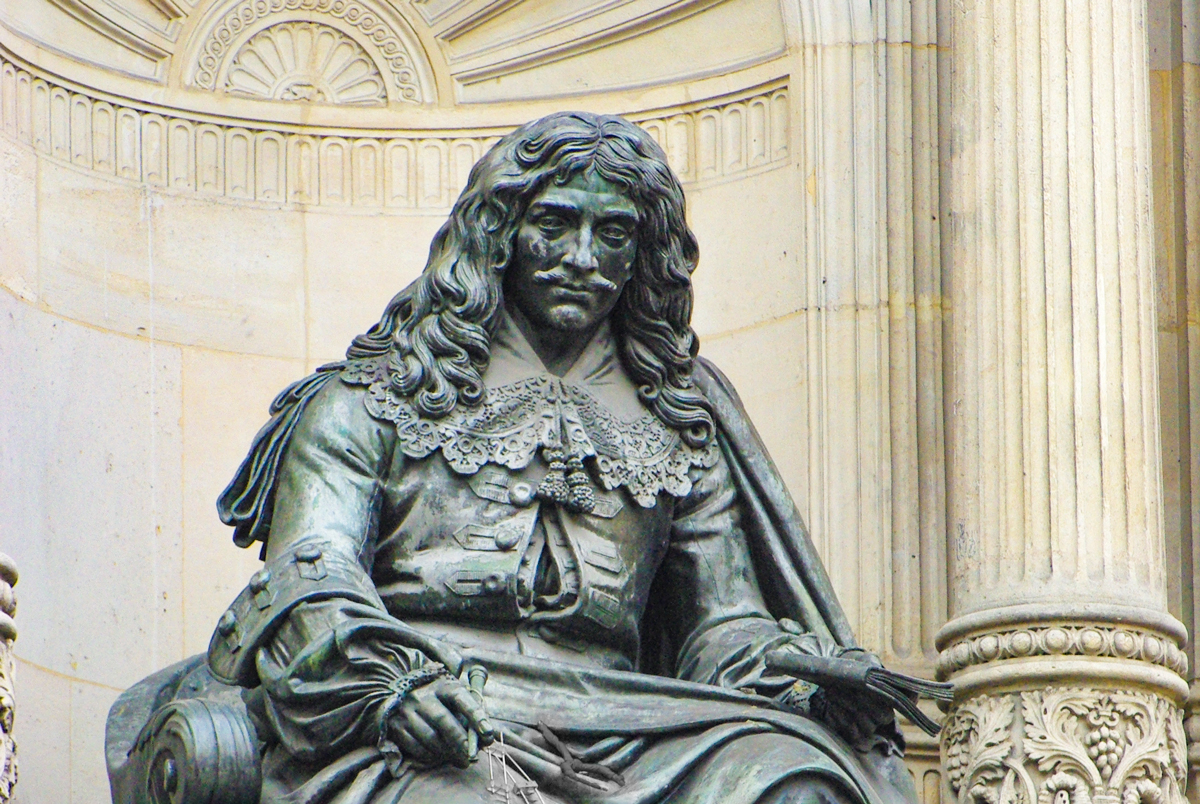
Molière was a great creator of dramatic forms and the lead performer in most of his plays. He exploited the various resources of comedy – verbal, gestural and visual, situational – and practised all genres of comedy, from farce to character comedy.
He created individualised characters with complex psychology that quickly became archetypes.
A lucid and penetrating observer, he painted the morals and behaviour of his contemporaries. He spared no one but the ecclesiastics and high dignitaries of the monarchy, to the great delight of his audience, both at court and in the city.
Far from being limited to harmless entertainment, his great comedies challenged well-established principles of social organisation. This gave rise to resounding polemics and the lasting hostility of devout circles.

Molière’s language: la langue de Molière
Her eventful life and strong personality have inspired playwrights and filmmakers.
As a sign of the emblematic place he occupies in French and Francophone culture, French is commonly referred to as “la langue de Molière“,
- just as German is “la langue de Goethe“,
- English “la langue de Shakespeare“,
- Spanish “la langue de Cervantès“
- and Italian “la langue de Dante“.
In the footsteps of Molière in Paris
Molière’s life is still poorly known. We have no letters, drafts or memoirs of him. The houses in which he lived and died have disappeared.
The only tangible remains of his life are a set of notarial deeds signed by him and the chair in which he collapsed during his last performance.
However, it is possible to follow in the footsteps of Molière in Paris. I have selected for you five sites to discover in central Paris.
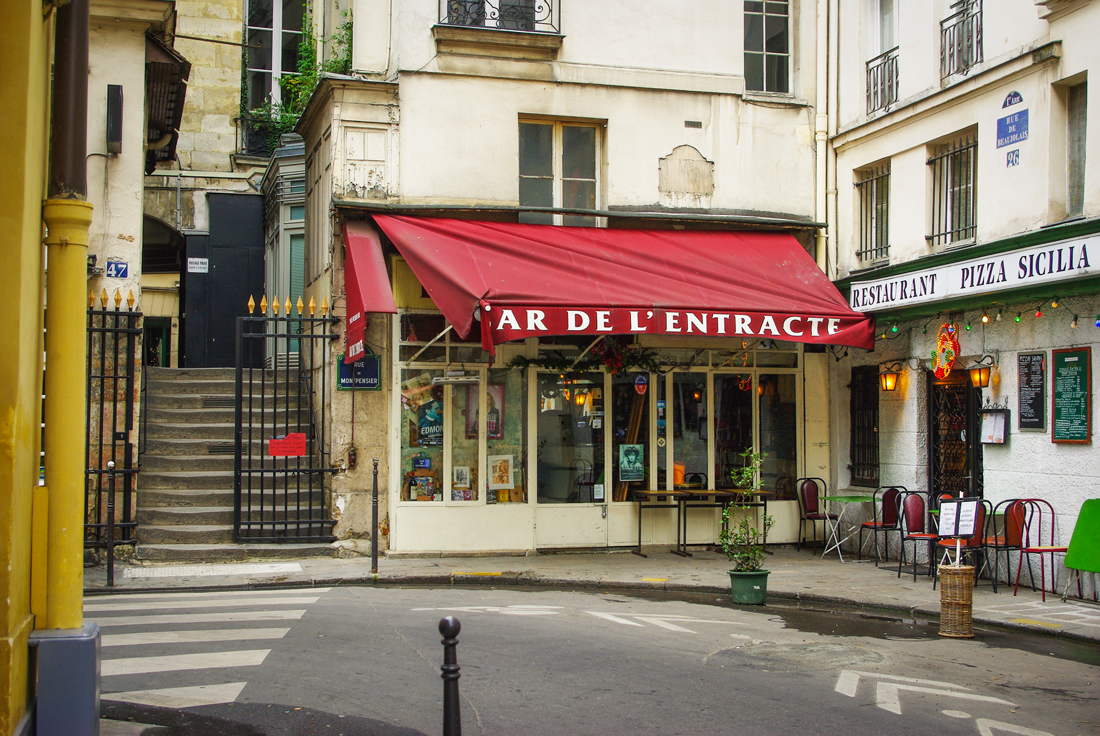
The Halles district
The Halles district of Paris is where Molière grew up.
The French writer was born in the rue Saint-Honoré. The exact date of his birth is not known. It is very likely that he was born in the early days of 1622, as he was baptised on 15 January 1622 in the church of Saint-Eustache.
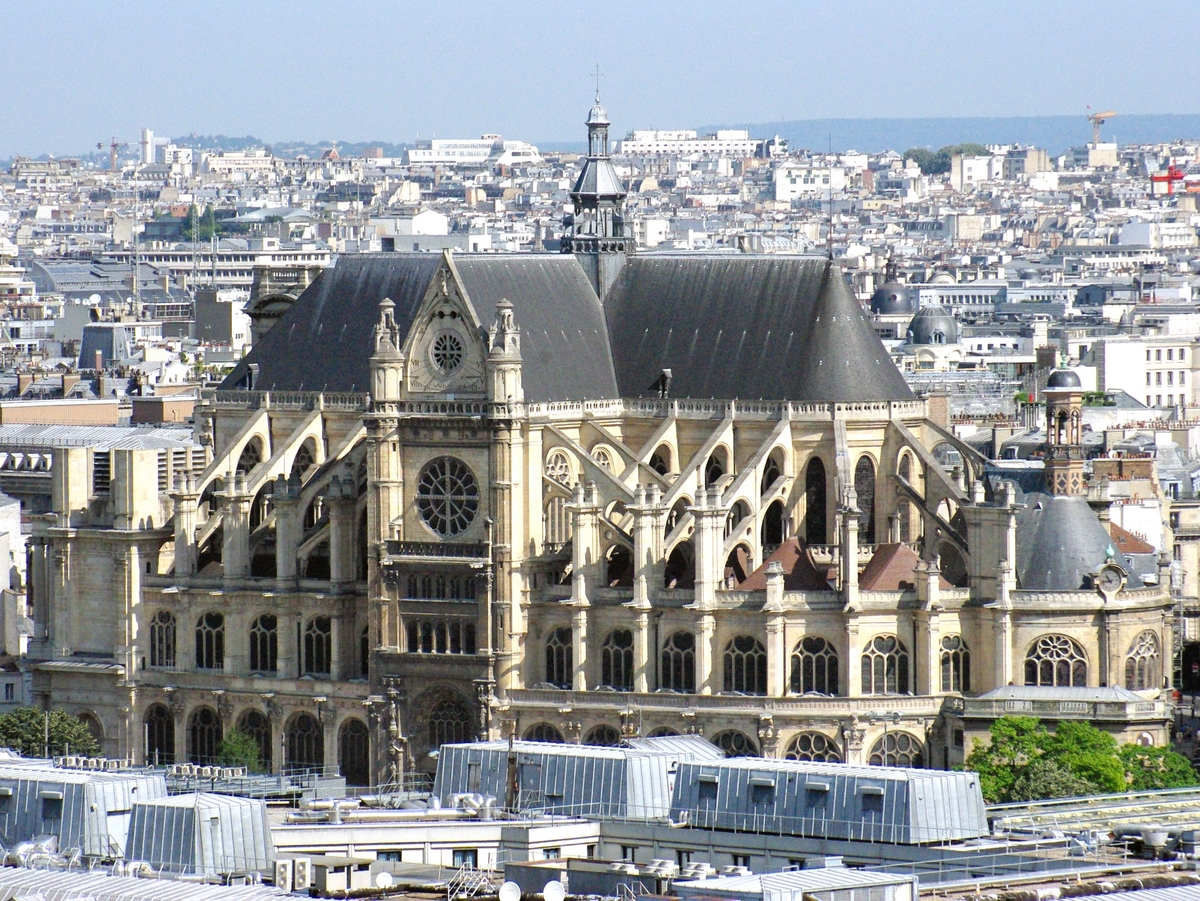
The parents of the future Molière lived in the very popular Halles district, in the house known as the “Pavillon des singes” (Monkeys Pavilion), on the eastern corner of the rue des Vieilles-Étuves (now rue Sauval) and the rue Saint-Honoré.
It corresponds to the houses at number 94 and 96 later built on rue Saint-Honoré.
This is where his father, Jean, an upholsterer merchant, had set up his business two years earlier, before marrying Marie Cressé.
The windows looked out onto the square known as the Carrefour de la Croix-du-Trahoir, which had been one of the capital’s main hangouts since the early Middle Ages.
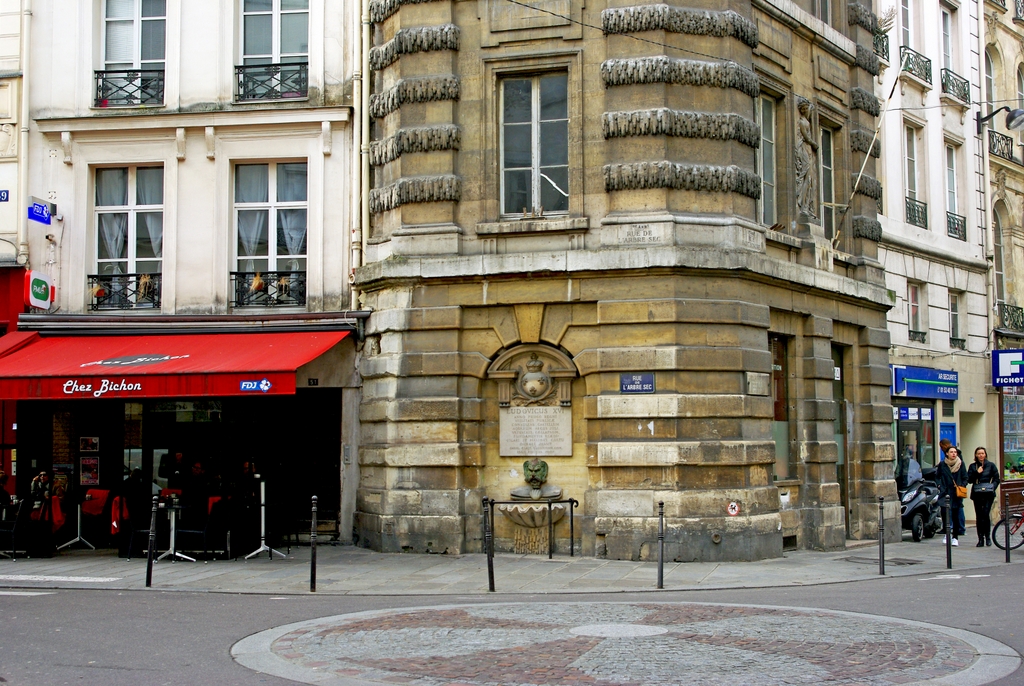
Théâtre du Palais-Royal
The Palais-Royal theatre is a Parisian theatre located at 38, rue de Montpensier and overlooking the Palais-Royal gardens.
In 1637, Cardinal de Richelieu had a theatre built on the east wing of the Palais-Royal building.
The Palais-Royal theatre opened its doors on 20 January 1661. At first, the Théâtre-Italien and Molière’s Company shared the stage between 1662 and 1673.
On 4 February, Molière’s Company premiered a new play by Molière, the heroic comedy Dom Garcie de Navarre, in which he played the title role alongside Madeleine Béjart.
Molière moved across the street to a flat on the second floor of a house in the rue Saint-Thomas-du-Louvre (on the site of present-day number 40, rue de Richelieu).
The birth of the Comédie-Française
In 1680, a royal decree required the Molière’s Company (la Troupe du Roy) to merge with the Troupe Royale. This led to the birth of the famous Comédie-Française.
The new company, which was large enough to be divided between Paris and the court’s residences, now performed every day of the week, and not only on “ordinary comedy days”.
The new Palais-Royal theatre
In 1830, Joseph-Jean Contat-Desfontaines, known as “Dormeuil”, actor and manager of the Gymnase-Dramatique, obtained permission from the new king to use the place as a theatre again. He had it entirely rebuilt by Louis Regnier de Guerchy, who designed the overhanging corbel on the rue de Montpensier.
The Palais-Royal theatre was inaugurated on 6 June 1831.
![Foyer of Théâtre du Palais Royal [Public Domain via Wikimedia Commons]](https://frenchmoments.eu/wp-content/uploads/2021/12/Foyer-of-Théâtre-du-Palais-Royal-Public-Domain-via-Wikimedia-Commons.jpg)
In 1880, the theatre was transformed by the architect Paul Sédille who redecorated the hall in an extremely ornate and gilded neo-Louis XV style, with sculptures by Dalou.
He also installed the fire escape. In order to avoid having to modify the interior of the theatre, he opted for the unusual option of placing it on the façade, in the form of metal walkways covered with mosaics.
![Théâtre du Palais-Royal © Coyau - licence [CC BY-SA 3.0] from Wikimedia Commons](https://frenchmoments.eu/wp-content/uploads/2021/12/Théâtre-du-Palais-Royal-©-Coyau-licence-CC-BY-SA-3.0-from-Wikimedia-Commons-scaled.jpg)
Today, the Palais Royal Theatre is a private theatre with a current seating capacity of 716.
Fontaine Molière
The Molière Fountain (Fontaine Molière or Monument à Molière) is a fountain located in the 1st arrondissement of Paris, on the Place Mireille, at the corner of the rue Molière and the rue de Richelieu.

In fact, Molière’s death is said to have occurred at ten o’clock in the evening of 21 February 1673 at 40, rue de Richelieu.
In 1838, a house was demolished opposite the one where Molière had died. The plan was to build a fountain topped by a nymph statue in the space left vacant.
Find out more about the Molière Fountain on the blog!
Rue du Croissant
As we have said, Molière died on 21 February 1673. As he had not signed a renunciation of his profession as an actor, he could not receive a religious burial.
Indeed, the ritual of the diocese of Paris made the administration of the sacraments conditional on this renunciation being made in writing or before a priest.
The Church was then embarrassed.
The parish priest of Saint-Eustache could not, without causing a scandal, bury him as if he had not been a comedian.
And, on the other hand, to refuse a Christian burial to such a well-known man risked shocking the public.
The embarrassment of Molière’s funeral
The solution was to approach the Archbishop of Paris.
This is what Molière’s wife, Armande Béjart, did on 18 February. In her request, she stated that of the three priests from the parish of Saint-Eustache whom she had called to perform extreme unction on Molière, two had refused to come and the third had arrived too late.
To be on the safe side, she even threw herself at the feet of the king, who “dismissed her abruptly”. She then sent a letter to the archbishop “to advise him of some means”.
The latter, after an enquiry, “in view of the evidence” gathered, allowed the priest of Saint-Eustache to bury Molière. But with the condition that this be done “without any pomp and with only two priests, and outside of the hours of the day, and that no service be held for him, either in the said parish or elsewhere”.
Where was Molière initially buried?
Molière was therefore buried at night on 21 February 1673 in the cemetery of the chapel of St Joseph.
The St. Joseph’s cemetery and its chapel used to run along with the present-day Rue du Croissant.
Declared national property in 1790, the chapel and cemetery were sold on 18 Floréal year V.
On the site, a market (marché Saint-Joseph) opened in 1806 for the retail sale of “butter, eggs, cheese, fruit, vegetables and other edibles“.
Enhanced in 1843, it was finally demolished in 1882 and replaced by a building dedicated to printing and the press (today at number 19).

Père Lachaise cemetery
On 6 July 1792, the Revolutionary authorities wished to honour the ashes of great men. They had the presumed remains of Molière exhumed, as well as those of La Fontaine, who lay in the same place.
After the enthusiasm had died down, the remains stayed in the cemetery for many years. Then the local authorities transferred them to the Museum of French Monuments in the revolutionary year VII.
When the authorities abolished the museum in 1816, they had the coffins transported to the eastern cemetery, now Père-Lachaise, where they were given a permanent home on 2 May 1817.
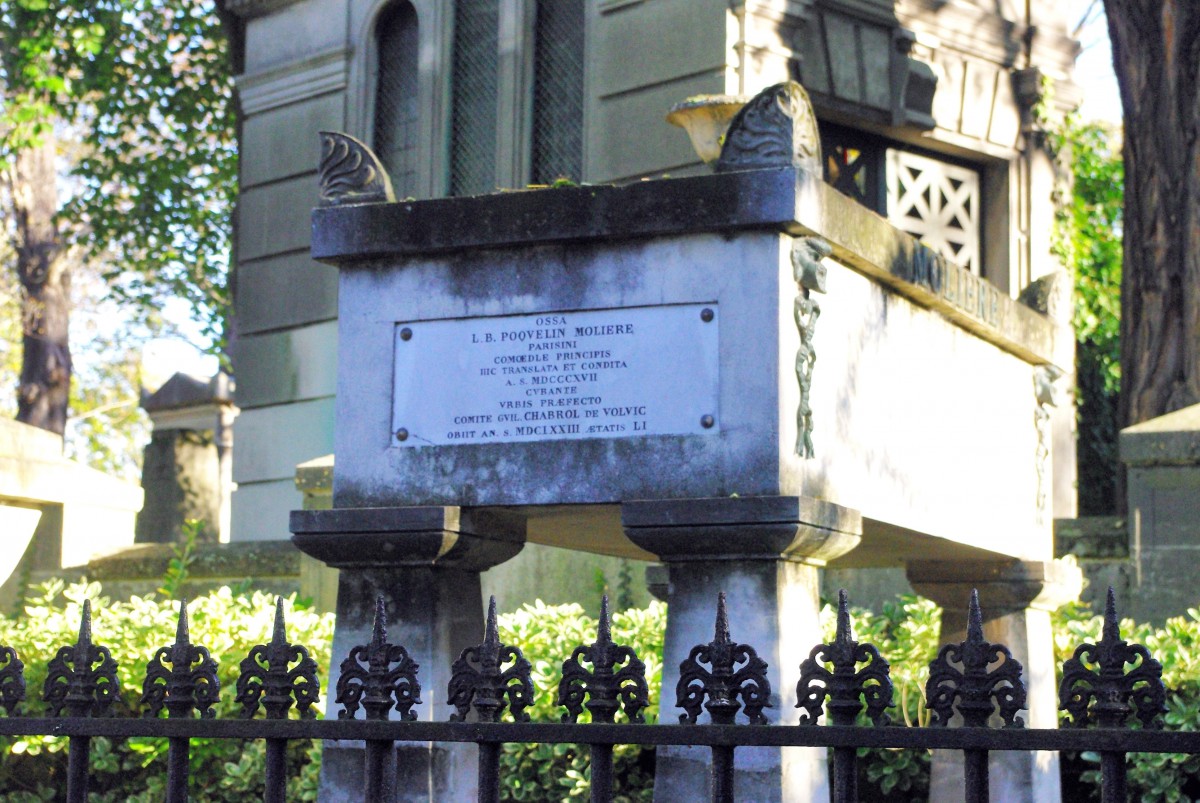
Find out more about the Père Lachaise cemetery on the blog!
Find out more about Molière in Paris
- Discover on the blog: the Molière Fountain and Père Lachaise Cemetery
- Read it on French on the webzine EnFranceAussi: Balade parisienne sur les traces de Molière
- Read more about the life of Molière on Wikipedia
- Get Molière: The Complete Richard Wilbur Translations (At the occasion of the 400th anniversary of Molière’s birth. All of Richard Wilbur’s unsurpassed translations of Molière’s plays are brought together for the first time in this two-volume gift set.)
- Watch L’Avare . A fun theatrical play from Molière starring Louis de Funès (DVD on sale at Amazon)
Pin it for later
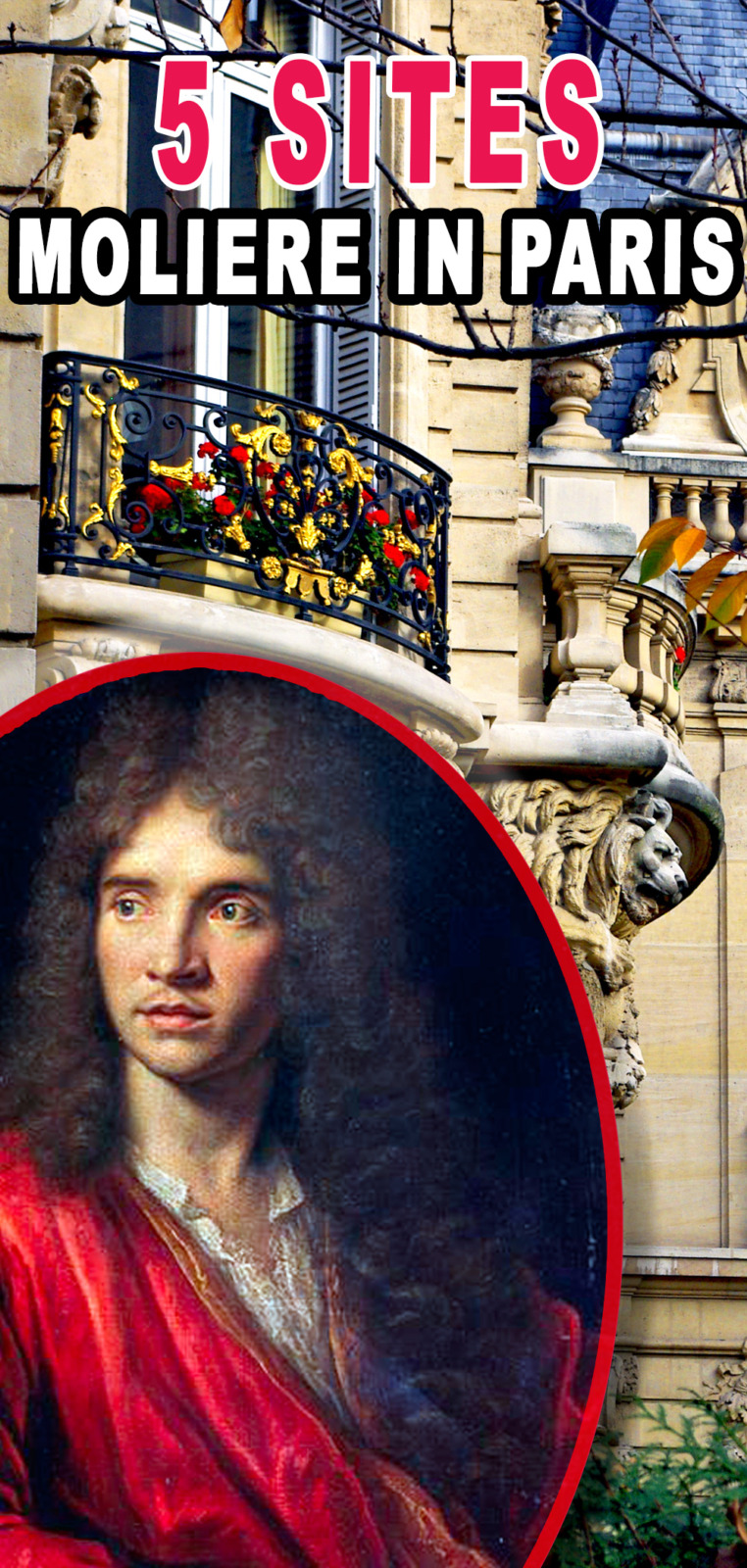




This is a fascinating glimpse of Molière’s life and death, Pierre. Merci!
You’re welcome! 👋
Molière is one of my favorite author 🙂
I enjoy the old french and thus Molière in that extend is just perfect for me.
Thanks to your article I know more about the author of : “L’avare” or “Le Misanthrope”
You’re welcome Sandrine! Thank you for the comment 👋